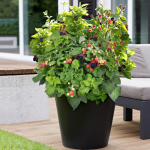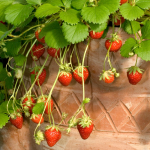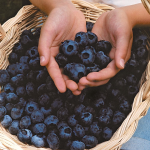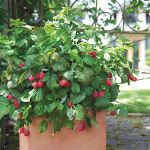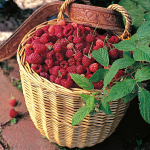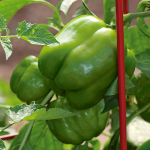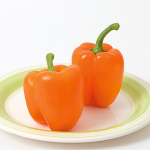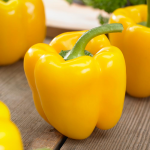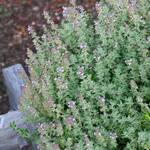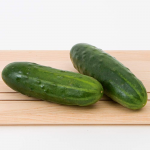Product Details
You'll be picking baskets of plump, conical Raspberries from late August until frost and sampling their delicious succulence as you move down each row of 'Joan J' bushes. The glossy, pinkish red fruit is firm, with small drupelets, and releases easily from the stem. With canes that are self-supporting and smooth (no spines!), harvesting is much pleasanter. 'Joan J,' which is also resistant to most insect pests, received an Award of Garden Merit from the Royal Horticultural Society. Cut all the canes back to the ground in late winter. PP 18,954
For more information on growing and care, click on Growing Guide.
Shipping
HOW PLANTS ARE SHIPPED
The size of the plants we ship has been selected to reduce the shock of transplanting. For some, this means a large, bareroot crown. Others cannot travel bareroot or transplant best if grown in containers. We ship these perennials and annuals in 1 pint pots, except as noted. We must point out that many perennials will not bloom the first year after planting, but will the following year, amply rewarding your patience. We ship bulbs as dormant, bare bulbs, sometimes with some wood shavings or moss. Shrubs, Roses, vines, and other woody plants may be shipped bareroot or in pots. The size of the pot is noted in the quick facts for each item.
WHEN WE SHIP
We ship our bulbs and plants at the right time for planting in your area, except as noted, with orders dispatched on a first-come, first-served basis by climate zone. We also ship a wide range of containers and planters, tools, supplies, fertilizers, garden wear, garden decor items, as well as indoor decorations like wreaths and dried bouquets when available. Estimated dates for shipping are indicated in the green Shipping Details box for each item. Please supply a street address for delivery. Kindly contact us with two weeks notice, if you'll be away at the expected time of delivery.
OUR GUARANTEE
We guarantee to ship plants that are in prime condition for growing. If your order is damaged or fails to meet your expectations, we will cheerfully replace or refund it. Please contact our Customer Service Department at 1-800-503-9624 or email us at [email protected]. Please include your order number or customer number when contacting us.
Reviews
Average Customer Rating:
 (3 Reviews)
Write a Review
(3 Reviews)
Write a Review
Sort by:
Pints and pints and pints and pints of raspberries!! 
A viewer from Boston, Massachusetts
14 of 14 people found this review helpful. Do you? yes no Certified buyer
Fruitful easy wonder 
A viewer from North NJ
I love this plant. Had it for 6 years now. Every year I have raspberries starting shortly after strawberry season ends, until winter frost. Every day a handful. Tasty, too. The plant "legs" take up maybe a square foot, the branches go out 4-5 square feet. String all around to keep the branches upright, but really quite low easy care.
No need to water. Worst is that in spring, it tries to extend its space, up to and including into the grass, but it's not as bad as the mint family... quite easy to control where it grows.
I haven't had a problem with bugs either. Some type of little larvae sometimes grow inside them near end of fall but if I pick religiously, it seems to be fine.
Tasty and Thornless 
Cathy an Indiana gardener from Linton, IN
Growing guide
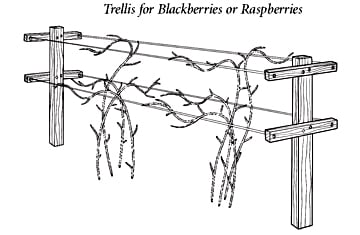
Latin Name Pronunciation: roo'-bus
Choosing a site. Plant in full sun and in rich, well-drained soil. Avoid siting where wild brambles, fruit trees, Strawberries, Melons, Tomatoes, Potatoes, Eggplants, or Peppers have been grown in the past. Soils in which these plants have grown may harbor disease-causing organisms.
Spacing. Plant blackberries 4-5ft apart in a row, with 10ft between rows. Space Raspberries 3ft apart in a row, with 8ft between rows.
Planting. Before planting, remove and discard the packaging materials and soak the roots in a pail of water for several hours. While soaking the roots of Blackberries, keep a towel or large rag wrapped loosely around them to keep moisture in and light out (keeping the roots covered in the bucket until you actually put the plant in the ground). For some reason not clearly understood even by fruit scientists, Blackberry bushes whose roots are exposed to bright sunlight may not survive transplanting. Adding compost, aged manure or a balanced organic fertilizer to your soil as you prepare the site will help plants get established. Dig a hole wide enough to accommodate the roots and deep enough to allow you to set the crown (the point where the stems of the plant meet the roots) 1in below the surface of the surrounding soil. Place the roots in the planting hole and arrange them like the spokes of a wheel or in whatever fashion appears natural, but take care not to break them, for they are fragile. Holding the crown at the proper level with one hand, push the soil back into the hole with the other, working soil around the roots to prevent the formation of air pockets. (Proper planting depth for Raspberries is 1-2in deeper than they were in the nursery. Blackberries should be just a little bit shallower -- ½-to-1in deeper than the soil line on the stem.) Then firm the soil around the crown with your feet. To catch and hold water and channel it down to the roots, make an 18-24in diameter ring of soil around the base of the plant. Finally water thoroughly -- even if rain appears imminent -- to settle the soil.
Watering and Fertilizing. Blackberries and Raspberries need at least 1in of water per week, especially during the first season after planting. If the amount of rainfall is less than this, water deeply at the base of the plants once a week. Keep moisture off the leaves to discourage disease. Fertilize the plants 4-6 weeks after planting, with a timed-release fertilizer. In subsequent years, fertilize in early spring and again in early July. Adding 1-2in of compost or well-rotted manure as a side dressing around each plant in spring will improve the soil's texture and add nutrients as well.
Training and pruning. To keep your plants healthy and productive and their fruit accessible for picking, it's a good idea to trellis them. A simple pair of T-shaped trellises, each consisting of a post and crosspiece with wires connecting them works well for Raspberries. Adding a second crosspiece and using taller posts will accommodate the more vigorous growth of Blackberries. Use a rot-resistant wood such as Cedar or Redwood for the posts. Nail or screw the lower crosspieces 3ft above the ground, and the upper ones 5ft above the ground. No pruning is required the first year as the plants are becoming established. Pruning requirements in the second and subsequent year differ by variety: Blackberries and Summer-bearing Raspberries ('Chester', 'Lauren', 'Nova', 'Triple Crown) -- Second year: prune out fruit-bearing canes soon after harvest. Third year and thereafter: in late winter before growth resumes, thin to leave 5-7 strong, healthy sideways-growing canes per foot of row (the canes growing sideways from the main stems are the fruit-bearing canes). Continue to prune out old fruit-bearing canes after harvest. For best results, contain the planting bed to a 12 ft width. Everbearing Raspberries ('Autumn Britten')--two methods can be used: 1) for a continuous crop of fruit, prune as described above for summer-bearing raspberries; 2) for a more plentiful fall crop, treat everbearers as fall-bearing to restrict their summer crop. To do so, cut or mow down all canes each year, after all leaves have fallen in late fall or in late winter just before new growth begins. Cut canes as close to the soil as possible to encourage the growth of new suckersthat will produce heavily in fall.
Harvesting. Our Raspberries and Blackberries begin bearing the second year from planting. The fruits are ready to pick when they pull easily off the cane.
For information on growing Bushel and Berry™ Raspberries click Growing Bushel and Berry® Blackberries and Raspberries.

